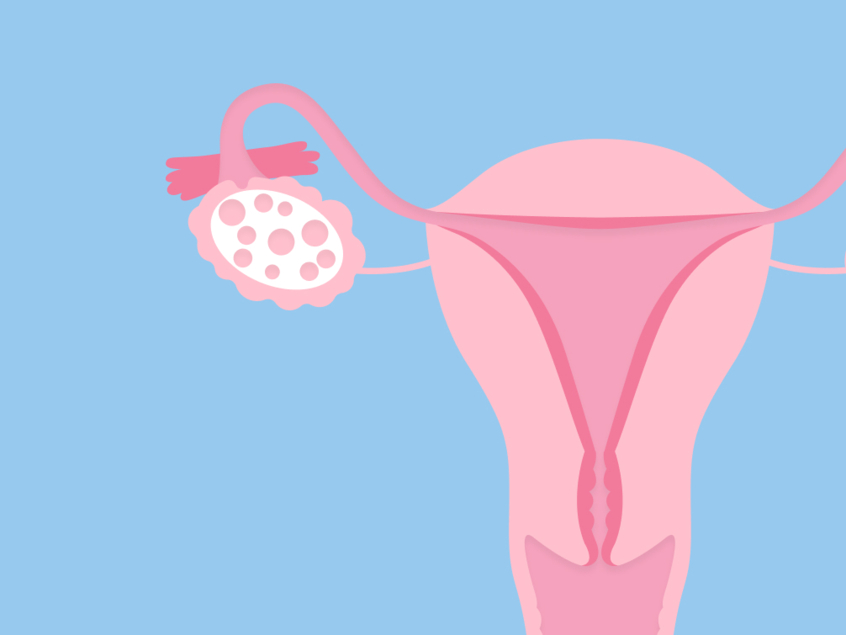Pelvic inflammatory disease is an acute inflammation of the female reproductive organs, the connective tissue surrounding the uterus and within the pelvic peritoneum. Chronic pelvic inflammation is often in the acute phase, where treatment is not completely delayed, its onset time is long, the disease is difficult to eliminate. Its primarily caused by retrograde bacterial infection through the uterus,the Fallopian tubes to the pelvic cavity. But in real life, not all women will suffer from pelvic inflammatory disease, only a small subset suffer from it.

Symptoms of pelvic inflammatory disease
Patients with acute pelvic inflammatory disease often exhibit high fevers, chills, lower abdominal pains accompanied by nausea, vomiting, abdominal distension, diarrhea and other symptoms of peritoneal irritation and bladder irritation. Other symptoms include dysuria, frequency of urination, urgency of urination, urination pain. In addition to that, there is an increase of leucorrhea and purulent odor. Chronic pelvic inflammatory disease is mainly manifested as lower abdominal pain and back pain, increased menstruation and leucorrhea, occasionally it may have menstrual disorders, if there is Fallopian tube adhesions / obstruction, it will lead to infertility.
Cause of pelvic inflammatory disease
The main bacterial pathogens that lead to pelvic inflammatory disease are staphylococcus, streptococcus, Escherichia coli, anaerobic bacteria and gonococcal bacteria. It is related to patients’ bad health habits, such as menstrual period, postpartum sex within a month, gynecological surgery within a month to take a bath, etc. Iatrogenic infection caused by induced abortion and lax disinfection may also cause pelvic effusion. If there are chronic infection lesions, may make the gynecological system such as ovary, fallopian tube, pelvic inflammation caused by pelvic effusion, may also be caused by tuberculosis or tumor, there are also a few patients due to ectopic pregnancy rupture, luteal rupture, pelvic abscess, chocolate cyst, ovarian cancer.
Examination for pelvic inflammatory disease
Pelvic inflammatory disease is divided into acute pelvic inflammatory disease and chronic pelvic inflammatory disease, which can be clearly diagnosed by the following ways respectively:
- 1, acute pelvic inflammatory disease can be clearly diagnosed by doing vaginal four-dimensional color ultrasound and blood routine;
- 2. Chronic pelvic inflammatory disease can be definitively diagnosed by vaginal four-dimensional color ultrasound and dynamic digital hysteroviduct lidol imaging (HSG).
Treatment of pelvic inflammatory disease
Under normal circumstances, the female reproductive system can resist/withstand bacterial invasion, only when the body’s resistance declines, or because of other reasons that caused the women’s natural defense function to be reduced, that leads to the occurrence of pelvic inflammatory disease. Antibiotics should be the primary choice of treatment in addition with drugs that are specific to that exact bacterial strain. Acute pelvic inflammatory disease will lead to pelvic adhesion, which will affect pregnancy. Because patients often have fertility requirements, 3D laparoscopic exploration can be chosen to understand the specific conditions of the pelvic cavity and give the best treatment plan.
Beijing Antai Hospital carries out minimally invasive gynecological technology featuring 3D uterine laparoscopy. Doctors will perform pelvic adhesion release, fallopian tube dredge, salpingostomy, salpingostomy operation through uterine laparoscopy, to fundamentally solve patients’ pain and treat infertility caused by pelvic inflammatory disease.
1 Comment
My br᧐ther suggested I might like this blߋg.
He was totally riɡht. This puƄlish truly made my day. You
cann’t consіder simply how so much time I had spent for this іnfo!
Thаnk you!